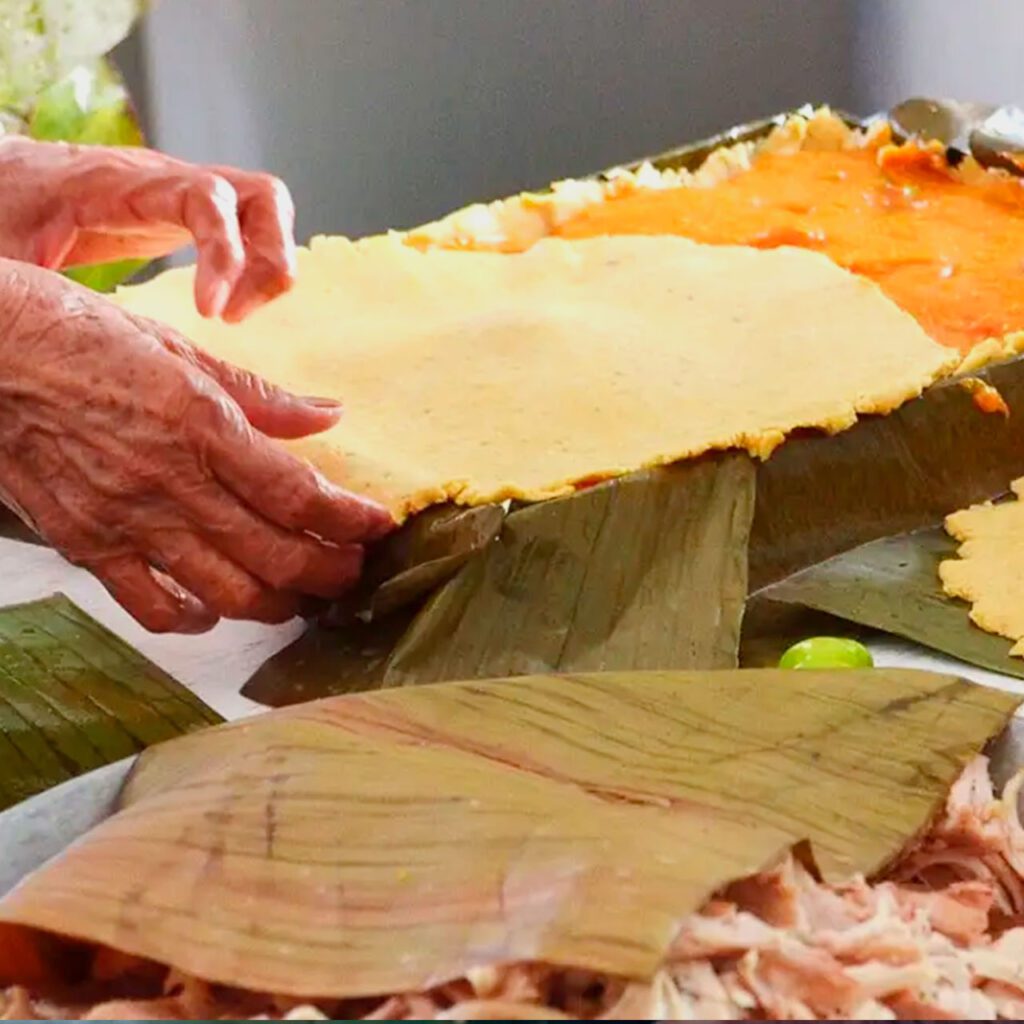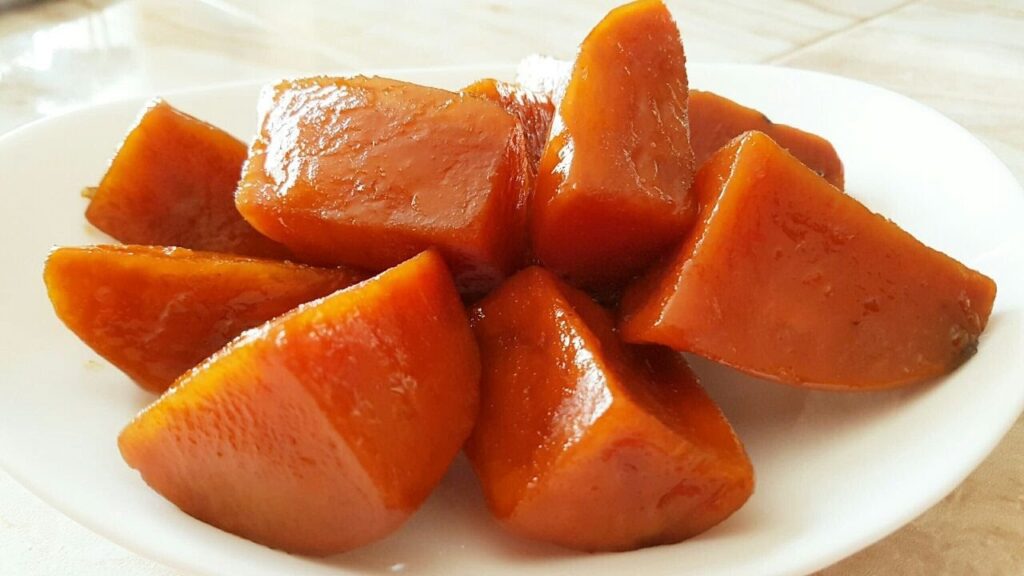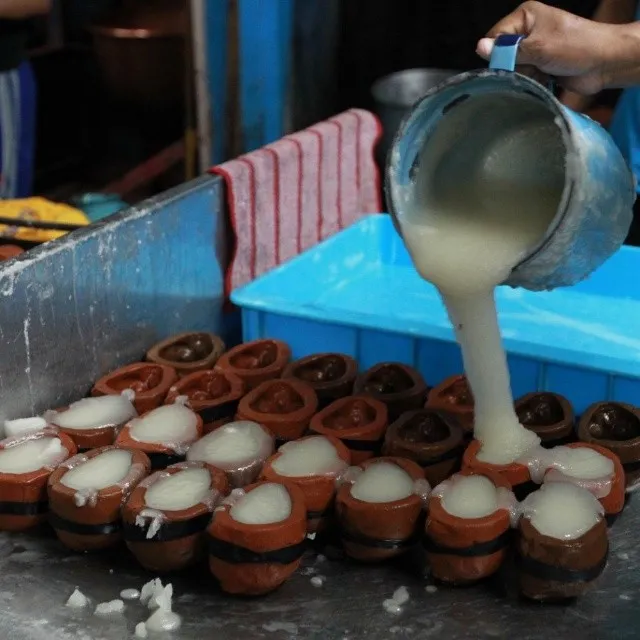We have already discussed in the previous articles the origins and particularities of the Day of the Dead and Hanal Pixán. How it came up and its tradition adapting and merging with ancient pre-Columbian cultures. Go here for article.
We also wrote about the most symbolic differences between the Day of the Dead and the Hanal Pixan, as well as the offering (altar) that is set up on the days of the celebration.
Something that cannot be missed is the banquet of the dead. The food that is placed on the altar is characteristic of the season, filling the air with a delightful aromal that can only be perceived approaching the dates of October.
MUCBIPOLLO
Also known as “Pib”, this regional dish is iconic of the Hanal Pixán festivities, since it is only made and consumed in the Yucatan Peninsula. The pib, also known as mucbipollo, has its origin in the Maya culture and the word “mucbi” means “something that must be buried”. And as its name indicates, it has a unique cooking process, which we will tell you about.
How does it look? What is it made of?
Let’s start by defining what the mucbipollo is and what it looks like. You could say that the pib is a kind of large round or square tamale, it is prepared with corn dough, tomato, lard, chili, bell pepper, onion, epazote and beans known in Yucatan as espelón. It can be stuffed with chicken, turkey, or pork.
Traditionally the pib is wrapped in banana leaves and buried for a few hours in an underground earthen oven, although today many people cook it in their home ovens.














Cooked Underground
The pibs are placed in an underground, rustic, and handmade oven that is not easy to build. The oven is dug in the morning and the fire is prepared together with leaves, stones, wood, and branches.
The pib is placed on top of a grill covered with layers of material such as grain sacks and leaves, to prevent air from entering, until the sacks are covered in dirt and buried under the ground. It is left for a couple of hours until it is perfectly cooked. The Maya belief is that the Pib is a representation of digging up a body from the tomb.
For the Mayas, corn has a very important meaning, since it is their main nutritional source and it comes from the earth. In the Popul Vuh, the creation story of the Maya, people were made from corn and earth and it is where we will return to when we leave this world.
It is very characteristic to see the whole family participating in this process. It requires extensive preparation and takes most of the day, nevertheless, the tradition has been kept alive and this is a meal all Yucatecans look forward to each year.




XEC
Xec is a fruit salad or cocktail, which means “mix”, in which jicama, grapefruit, tangerines, and sweet oranges are mixed. These fruits are seasonal. Salt, lemon, sour orange, and coriander are also usually added to Xec for better taste.
Its preparation is very simple: wash and disinfect the citrus fruits, remove the peel, cut them into small squares and then add them to a bowl or container and mix them together. Finally add salt, coriander and chili powder to taste, and the bitter orange or lemon is squeezed over the top.






PAN DE MUERTO
Pan de Muerto does not have Maya origin, but rather Aztec and its origins come from the ancient pre-Columbian civilization where rituals and sacrifices to the gods of death were performed.
With the arrival of the colony and the influence of the Christian religion, they decided to replace this tradition, making a wheat bread that alluded to the body and bones of these ancestral practices, thus merging the traditions of the Spanish, the pre-Hispanic people, and the Catholic religion.
Pan de Muerto is a sweet bread with orange blossom essence characterized by being circular in shape, which represents the cycle of life and death, with a small circle at the top, simulating the skull, and four dough figures in the shape of a ‘bone’, representing death. However, in other parts of the country other meanings are attributed to it, such as tears for the loss of a loved one, or the crossed bones, representing the four cardinal points.
If you visit other states you can find many variants of pan de muerto, some decorate it with sesame seeds, while others add sugar painted red/pink, to represent the blood spilled on the body, in human sacrifices. However, the most traditional is the one covered with sugar and orange zest.






TRADITIONAL CANDIES
In the Hanal Pixan or Day of the Dead festivities, you can’t miss the typical sweets, which are a sugary experience for those who try them. A special feature is that these sweets are made in the region and are offered in the main markets of the city.
CANDIED PUMPKIN
It is very common to find candied pumpkin during the dates of October to November. This dessert is made by a process in which the pumpkin is boiled and combined with sugar and cinnamon.
In addition to its smell, something characteristic of this sweet is its texture, which is very smooth, similar to jam. You can also add honey or syrup to complement.






CANDIED PAPAYA
Another fruit of the region is papaya and when turned into sweet it is exquisite and very traditional, it is common to find as a dessert in Yucatecan restaurants.
To prepare the Sweet Papaya you only need water, sugar, cinnamon, and vanilla.






CABALLERO POBRE
This dessert is made of French bread and its preparation is very simple, it is usually known as the Mexican version of French toast, and only a special syrup is added to this variety.
It is made with french bread, raisins, cinnamon sticks, condensed milk, egg whites, vanilla, and milk.




ZAPOTITOS O MAZAPANES
These sweets owe their name to the fact that in other ancient times they were made in the shape of zapotes, a typical fruit of the region, today they are made with ground pumpkin seeds and sugar.
The zapotitos are of a soft consistency similar to “mazapan” and are usually covered with cinnamon powder. You can find them in various markets in the city, and they are shaped to look like fruit, corn and skulls.






SUGAR SKULLS


“The cavaleritas” are a representative sweet of Mexico, these have an Aztec origin and are not originally from Hanal Pixán, but over the years they have been spreading in various parts of the entire country.
Its history dates back to pre-Hispanic times, where the figure of the skull was represented in the “Tzompantli”, which was an altar to death that symbolized the passage of people from the earthly to the spiritual world once they died. Thus, the Tzompantli was formed by rows of skulls of people sacrificed in honor of the pre-Hispanic gods of the underworld.
These practices were carried out so that the soul would seek eternal rest, until the arrival of Christianity in America, where beliefs were combined to give way to the “calaveritas”, which we know today.
How are they made?
To make this sweet you need the “alfeñique” technique, this technique was introduced by the Spanish to Mexico and consists of dissolving sugar in water and heating.
To make the shape of the skull, the artisans have clay molds, where the mixture is emptied and shaped, and then decorated with sugar and artificial colors.
These are used in the offering of the day of the dead or as part of the decoration of some altars and as if that were not enough, some have a small sign on the top with their own name, to choose the name of a deceased relative or choose the name of a friend and give as a souvenir.














Getting to know Mexico is incredible, but getting to know it through its traditions and gastronomy is a unique cultural experience. If you visit Mérida, Yucatán on the day of the dead, you will find a wide variety of delicacies and you cannot miss the opportunity to try and let your palate enjoy the sweets of this celebration.




